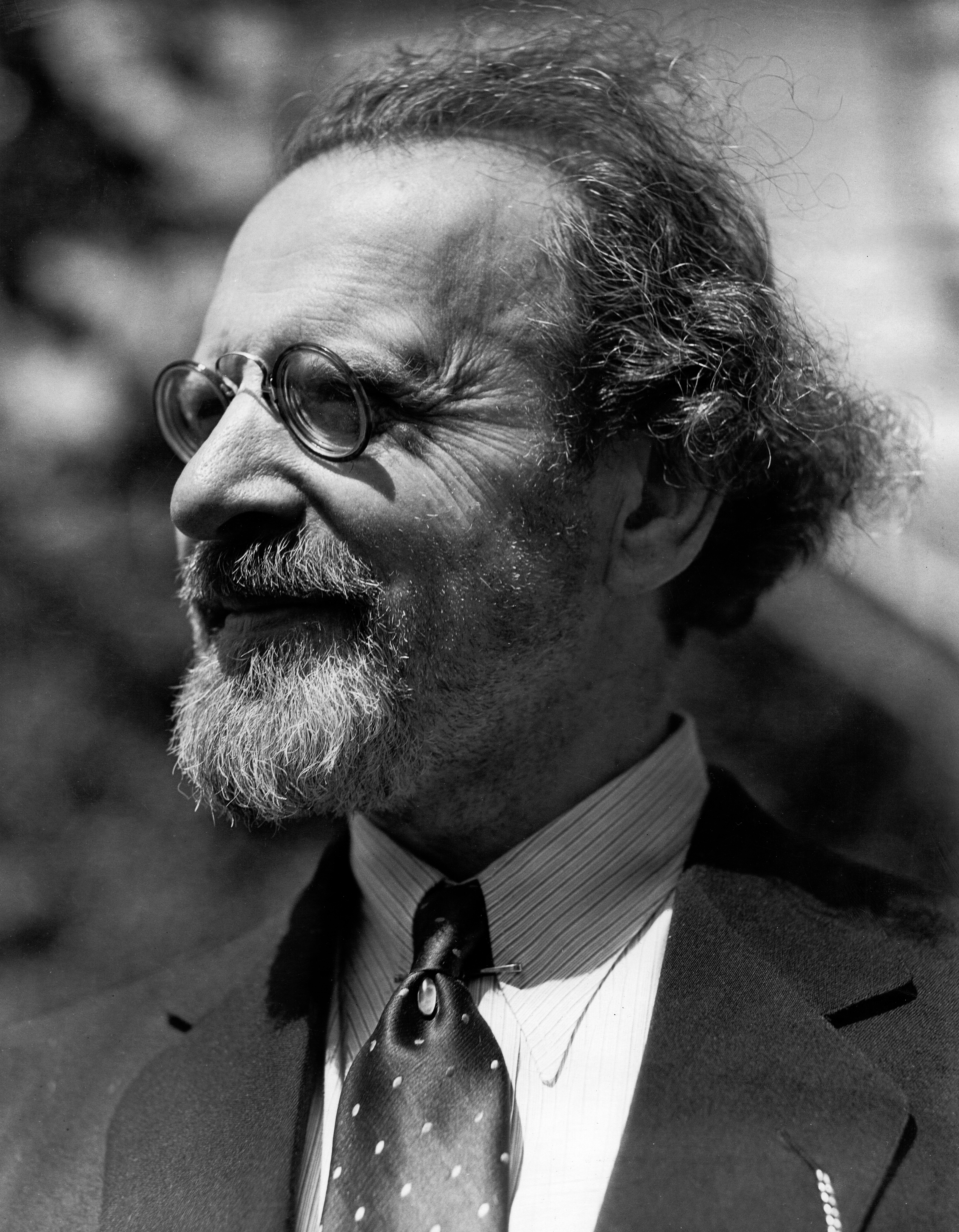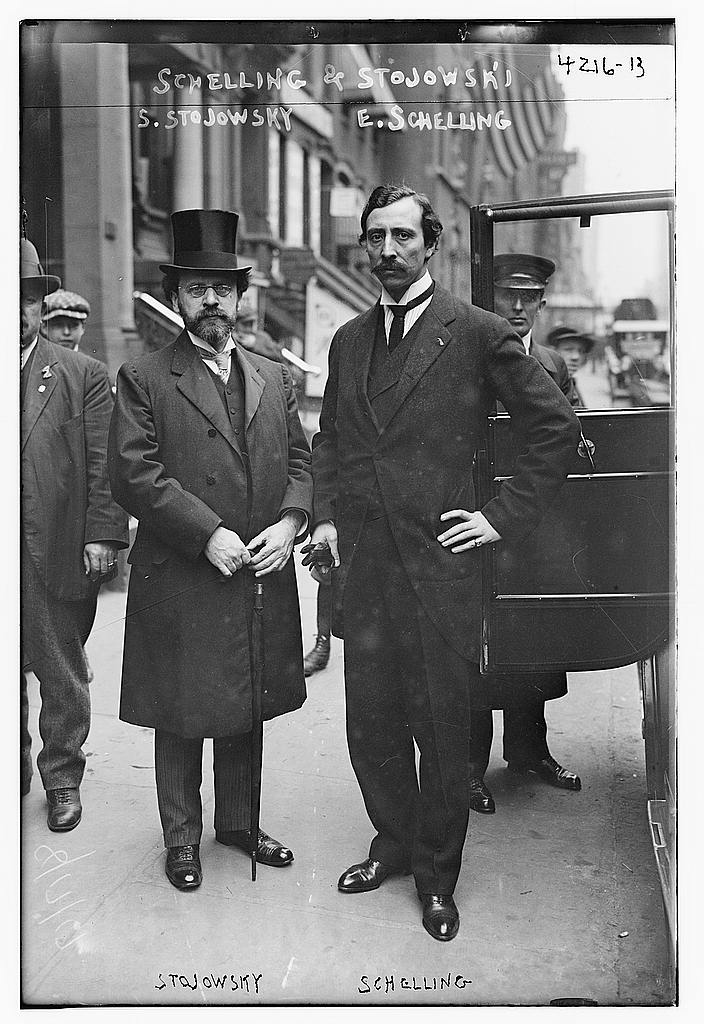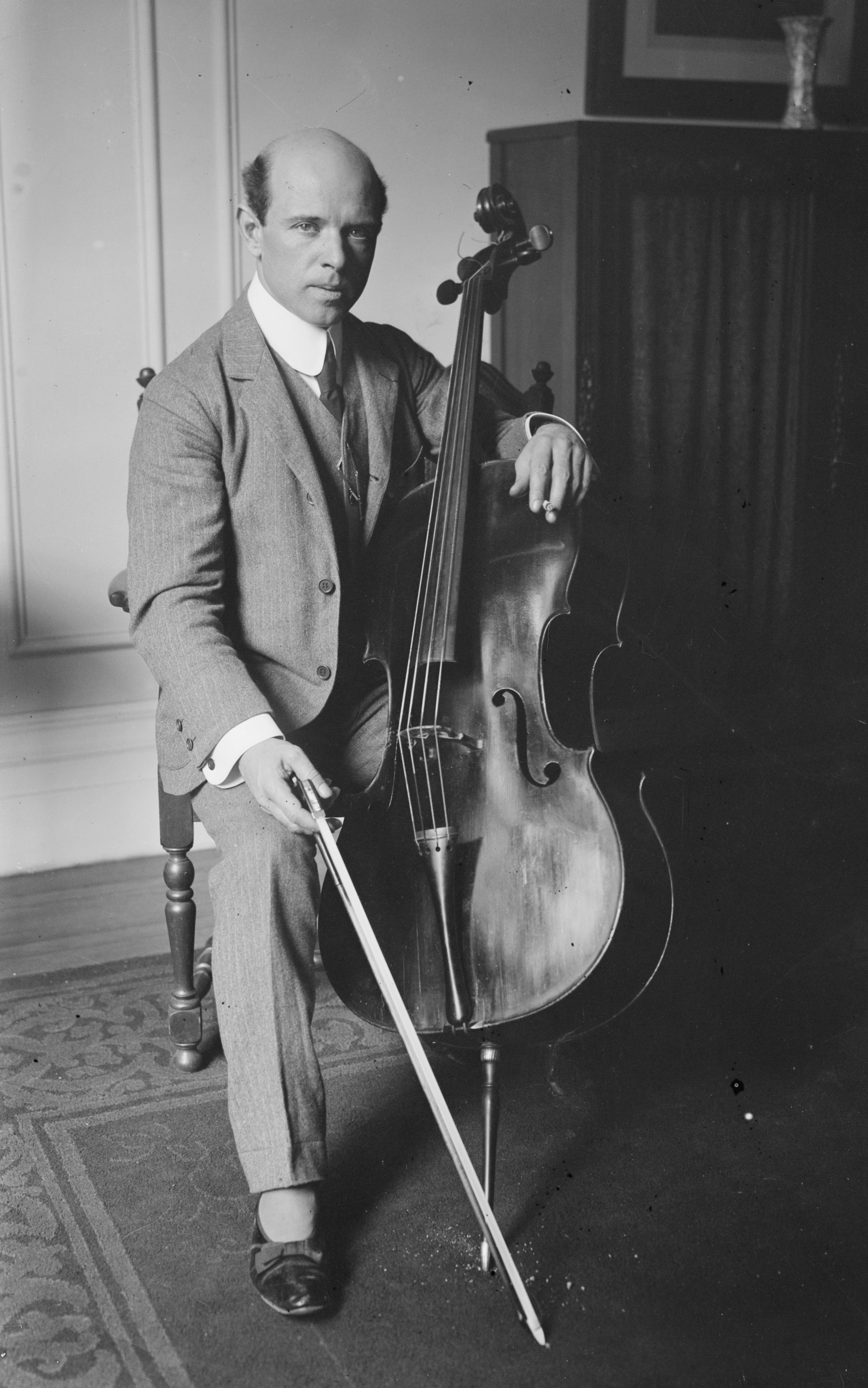|
Sigismund Stojowski
Zygmunt Denis Antoni Jordan de Stojowski (May 4, 1870November 5, 1946) was a Polish pianist and composer. Life He was born on May 4, 1870 near the city of Kielce. Stojowski began his musical training with his mother, and with Polish composer Władysław Żeleński. In Kraków, as a seventeen-year-old student, he made his debut as a concert pianist performing Beethoven's Piano Concerto No. 3 with the local orchestra. At the age of eighteen he moved to Paris and studied piano with Louis Diémer and composition with Léo Delibes. Two years later at the Paris Conservatoire, he would win first prizes in piano performance, counterpoint and fugue. According to Stojowski, however, in a December 1901 interview that appeared in a Warsaw magazine, the teachers who had the most profound influence on him as a musician were the Polish violinist-composer Wladyslaw Gorski and pianist-composer Ignacy Jan Paderewski. Stojowski's music was found worthy enough to be included in the first ... [...More Info...] [...Related Items...] OR: [Wikipedia] [Google] [Baidu] |
Zygmunt Stojowski
Zygmunt Denis Antoni Jordan de Stojowski (May 4, 1870November 5, 1946) was a Polish pianist and composer. Life He was born on May 4, 1870 near the city of Kielce. Stojowski began his musical training with his mother, and with Polish composer Władysław Żeleński. In Kraków, as a seventeen-year-old student, he made his debut as a concert pianist performing Beethoven's Piano Concerto No. 3 with the local orchestra. At the age of eighteen he moved to Paris and studied piano with Louis Diémer and composition with Léo Delibes. Two years later at the Paris Conservatoire, he would win first prizes in piano performance, counterpoint and fugue. According to Stojowski, however, in a December 1901 interview that appeared in a Warsaw magazine, the teachers who had the most profound influence on him as a musician were the Polish violinist-composer Wladyslaw Gorski and pianist-composer Ignacy Jan Paderewski Ignacy Jan Paderewski (; – 29 June 1941) was a Polish pianis ... [...More Info...] [...Related Items...] OR: [Wikipedia] [Google] [Baidu] |
Antonia Brico
Antonia Louisa Brico (Rotterdam, June 26, 1902 – Denver, August 3, 1989) was a Dutch-born conductor and pianist. Early life and education Born Antonia Louisa Brico to a Dutch Catholic unmarried mother in Rotterdam, Netherlands, Brico was renamed Wilhelmina Wolthuis by her foster parents. She and her foster parents migrated to the United States in 1908 and settled in California. On leaving Oakland Technical High School in Oakland in 1919 she was already an accomplished pianist and had experience in conducting. At the University of California, Berkeley, Brico worked as an assistant to the director of the San Francisco Opera. Following her graduation in 1923 she studied piano under a variety of teachers, most notably under Zygmunt Stojowski. In 1927, Brico entered the Berlin State Academy of Music and in 1929 graduated from its master class in conducting, the first American to do so. During that period she was also a pupil of Karl Muck, conductor of the Hamburg Philharm ... [...More Info...] [...Related Items...] OR: [Wikipedia] [Google] [Baidu] |
Alfred Newman (composer)
Alfred Newman (March 17, 1900 – February 17, 1970) was an American composer, arranger, and conductor of film music. From his start as a music prodigy, he came to be regarded as a respected figure in the history of film music. He won nine Academy Awards and was nominated 45 times, contributing to the extended Newman family being the most Academy Award-nominated family, with a collective 92 nominations in various music categories. In a career spanning more than four decades, Newman composed the scores for over 200 motion pictures. Some of his most famous scores include ''Wuthering Heights'', ''The Hunchback of Notre Dame'', '' The Mark of Zorro'', ''How Green Was My Valley'', '' The Song of Bernadette'', ''Captain from Castile'', ''All About Eve'', '' Love is a Many Splendored Thing'', ''Anastasia'', ''The Diary of Anne Frank'', '' How The West Was Won'', ''The Greatest Story Ever Told'', and his final score, ''Airport'', all of which were nominated for or won Academy Awards. ... [...More Info...] [...Related Items...] OR: [Wikipedia] [Google] [Baidu] |
Mischa Levitzki
Mischa Levitzki (also spelled Levitski; uk, Міша Левицький (); May 25, 1898 – January 2, 1941) was a Russian-born U.S.-based concert pianist. Levitzki was born in Kremenchuk, Ukraine (then part of the Russian Empire), to Jewish parents who were naturalised American citizens on a return trip to Ukraine. He was playing the violin at the age of three, but soon developed an interest in the piano, which he studied in Warsaw with Aleksander Michałowski before making his debut in Antwerp in 1906. In New York, his father brought him to the attention of Walter Damrosch, who obtained a scholarship for him at the Institute of Musical Art (now the Juilliard School) as a pupil of Zygmunt Stojowski, with whom he studied from 1907 to 1911. In 1913 Levitzki entered the Berlin Hochschule für Musik, where he became the youngest student of Ernst von Dohnányi and was awarded the Mendelssohn Prize in 1915. By this time he had performed throughout Europe and Scandinavia. He ... [...More Info...] [...Related Items...] OR: [Wikipedia] [Google] [Baidu] |
New York Philharmonic
The New York Philharmonic, officially the Philharmonic-Symphony Society of New York, Inc., globally known as New York Philharmonic Orchestra (NYPO) or New York Philharmonic-Symphony Orchestra, is a symphony orchestra based in New York City. It is one of the leading American orchestras popularly referred to as the "Big Five (orchestras), Big Five". The Philharmonic's home is David Geffen Hall, located in New York's Lincoln Center for the Performing Arts. Founded in 1842, the orchestra is one of the oldest musical institutions in the United States and the oldest of the "Big Five" orchestras. Its record-setting 14,000th concert was given in December 2004. History Founding and first concert, 1842 The New York Philharmonic was founded in 1842 by the American conductor Ureli Corelli Hill, with the aid of the Irish composer William Vincent Wallace. The orchestra was then called the Philharmonic Society of New York. It was the third Philharmonic on American soil since 1799, and had as it ... [...More Info...] [...Related Items...] OR: [Wikipedia] [Google] [Baidu] |
New York City
New York, often called New York City or NYC, is the List of United States cities by population, most populous city in the United States. With a 2020 population of 8,804,190 distributed over , New York City is also the List of United States cities by population density, most densely populated major city in the United States, and is more than twice as populous as second-place Los Angeles. New York City lies at the southern tip of New York (state), New York State, and constitutes the geographical and demographic center of both the Northeast megalopolis and the New York metropolitan area, the largest metropolitan area in the world by urban area, urban landmass. With over 20.1 million people in its metropolitan statistical area and 23.5 million in its combined statistical area as of 2020, New York is one of the world's most populous Megacity, megacities, and over 58 million people live within of the city. New York City is a global city, global Culture of New ... [...More Info...] [...Related Items...] OR: [Wikipedia] [Google] [Baidu] |
Juilliard School
The Juilliard School ( ) is a private performing arts conservatory in New York City. Established in 1905, the school trains about 850 undergraduate and graduate students in dance, drama, and music. It is widely regarded as one of the most elite drama, music, and dance schools in the world. History Early years: 1905-1946 In 1905, the Institute of Musical Art, Juilliard's predecessor institution, was founded by Frank Damrosch, the godson of Franz Liszt and head of music education for New York City's public schools, on the premise that the United States did not have a premier music school and too many students were going to Europe to study music. In 1919, a wealthy textile merchant named Augustus Juilliard died and left the school in his will the largest single bequest for the advancement of music at that time. In 1968, the school's name was changed from the Juilliard School of Music to The Juilliard School to reflect its broadened mission to educate musicians, directors, ... [...More Info...] [...Related Items...] OR: [Wikipedia] [Google] [Baidu] |
Pablo Casals
Pau Casals i Defilló (Catalan: ; 29 December 187622 October 1973), usually known in English by his Castilian Spanish name Pablo Casals,Honors To Be Conferred On English Composers: Series of Concerts Devoted to modern Englishmen to be Given in London '''', 1911-04-09, retrieved 2009-08-01 was a and [...More Info...] [...Related Items...] OR: [Wikipedia] [Google] [Baidu] |
Harold Bauer
Harold Victor Bauer (28 April 1873 – 12 March 1951) was a noted pianist of Jewish heritage who began his musical career as a violinist. Biography Harold Bauer was born in Kingston upon Thames; his father was a German violinist and his mother was English. He took up the study of the violin under the direction of his father and Adolf Pollitzer. He made his debut as a violinist in London in 1883, and for nine years toured England. In 1892, however, he went to Paris and studied the piano under Ignacy Jan Paderewski for a year, though still maintaining his interest in the violin. An anecdote reports that Paderewski jokingly told Bauer to concentrate on the piano because "You have such beautiful hair". In 1893, in Paris, he and Achille Rivarde premiered Frederick Delius's Violin Sonata in B major. During 1893-94 he travelled all through Russia accompanying the noted soprano Mademoiselle Nikita and giving piano recitals and concerts, after which he returned to Paris. Further re ... [...More Info...] [...Related Items...] OR: [Wikipedia] [Google] [Baidu] |
Frank Damrosch
Frank Heino Damrosch (June 22, 1859 – October 22, 1937) was a German-born American music conductor and educator. In 1905, Damrosch founded the New York Institute of Musical Art, a predecessor of the Juilliard School. Life and career Damrosch was born on June 22, 1859 in Breslau, Silesia, the son of Helene von Heimburg, a former opera singer, and conductor Leopold Damrosch. He came to the United States with his father, brother, conductor Walter Damrosch, and sister, music teacher Clara Mannes, in 1871. His parents were Lutheran (his paternal grandfather was Jewish). He had studied music in Germany under Dionys Pruckner. He studied in New York under Ferdinand von Inten. He also studied in Europe under Moritz Moszkowski. He originally intended to adopt a business career, and to that end went to Denver, Colorado, but the musical impulse proved too strong, and in 1884 he was an organist, conductor of the Denver Chorus Club, and supervisor of music in the public schools. For so ... [...More Info...] [...Related Items...] OR: [Wikipedia] [Google] [Baidu] |
Camille Saint-Saëns
Charles-Camille Saint-Saëns (; 9 October 183516 December 1921) was a French composer, organist, conductor and pianist of the Romantic music, Romantic era. His best-known works include Introduction and Rondo Capriccioso (1863), the Piano Concerto No. 2 (Saint-Saëns), Second Piano Concerto (1868), the Cello Concerto No. 1 (Saint-Saëns), First Cello Concerto (1872), ''Danse macabre (Saint-Saëns), Danse macabre'' (1874), the opera ''Samson and Delilah (opera), Samson and Delilah'' (1877), the Violin Concerto No. 3 (Saint-Saëns), Third Violin Concerto (1880), the Symphony No. 3 (Saint-Saëns), Third ("Organ") Symphony (1886) and ''The Carnival of the Animals'' (1886). Saint-Saëns was a musical prodigy; he made his concert debut at the age of ten. After studying at the Paris Conservatoire he followed a conventional career as a church organist, first at Saint-Merri, Paris and, from 1858, La Madeleine, Paris, La Madeleine, the official church of the Second French Empire, Fren ... [...More Info...] [...Related Items...] OR: [Wikipedia] [Google] [Baidu] |







